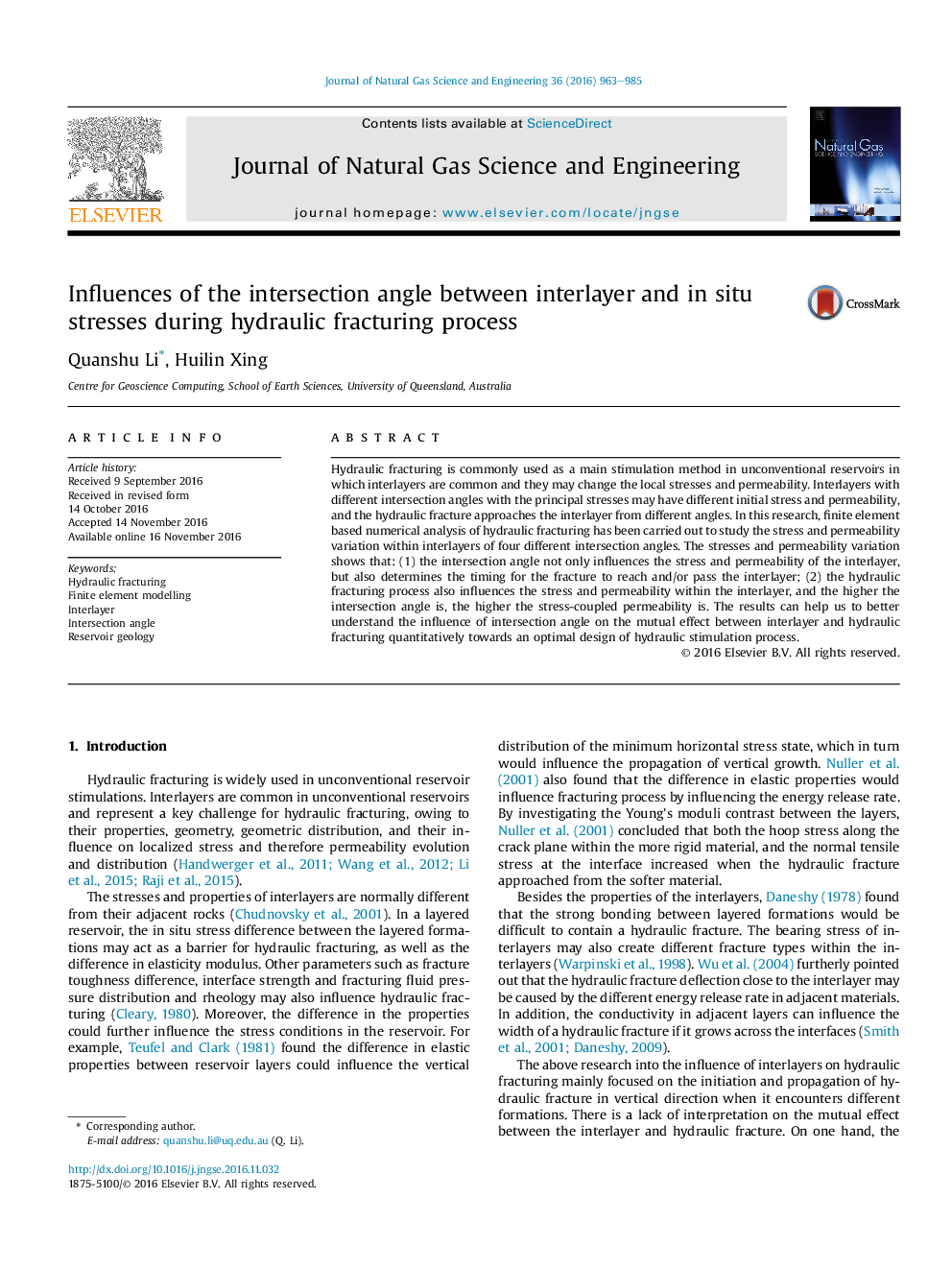| Article ID | Journal | Published Year | Pages | File Type |
|---|---|---|---|---|
| 5484879 | Journal of Natural Gas Science and Engineering | 2016 | 23 Pages |
Abstract
Hydraulic fracturing is commonly used as a main stimulation method in unconventional reservoirs in which interlayers are common and they may change the local stresses and permeability. Interlayers with different intersection angles with the principal stresses may have different initial stress and permeability, and the hydraulic fracture approaches the interlayer from different angles. In this research, finite element based numerical analysis of hydraulic fracturing has been carried out to study the stress and permeability variation within interlayers of four different intersection angles. The stresses and permeability variation shows that: (1) the intersection angle not only influences the stress and permeability of the interlayer, but also determines the timing for the fracture to reach and/or pass the interlayer; (2) the hydraulic fracturing process also influences the stress and permeability within the interlayer, and the higher the intersection angle is, the higher the stress-coupled permeability is. The results can help us to better understand the influence of intersection angle on the mutual effect between interlayer and hydraulic fracturing quantitatively towards an optimal design of hydraulic stimulation process.
Related Topics
Physical Sciences and Engineering
Earth and Planetary Sciences
Earth and Planetary Sciences (General)
Authors
Quanshu Li, Huilin Xing,
